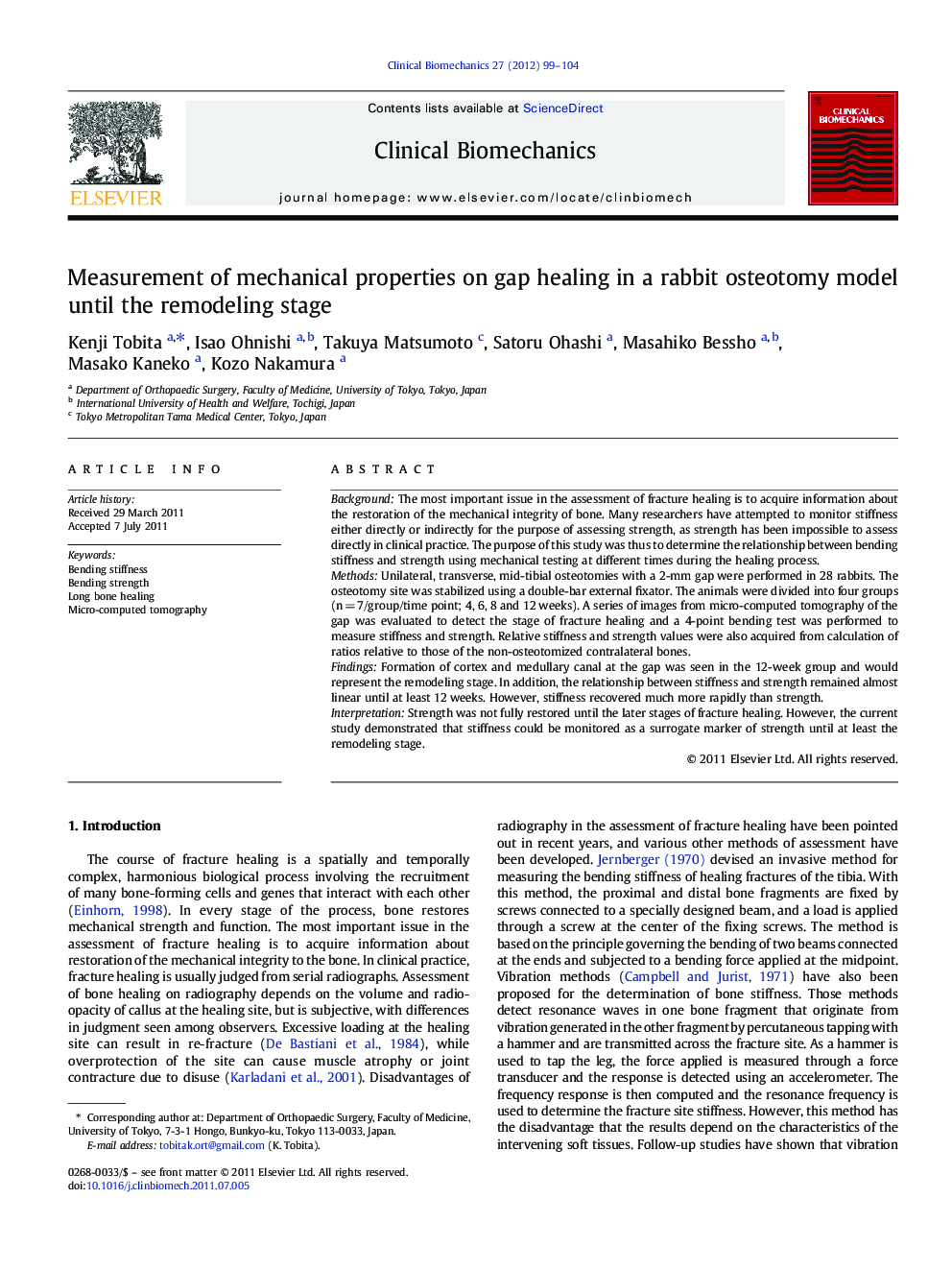| Article ID | Journal | Published Year | Pages | File Type |
|---|---|---|---|---|
| 6205227 | Clinical Biomechanics | 2012 | 6 Pages |
BackgroundThe most important issue in the assessment of fracture healing is to acquire information about the restoration of the mechanical integrity of bone. Many researchers have attempted to monitor stiffness either directly or indirectly for the purpose of assessing strength, as strength has been impossible to assess directly in clinical practice. The purpose of this study was thus to determine the relationship between bending stiffness and strength using mechanical testing at different times during the healing process.MethodsUnilateral, transverse, mid-tibial osteotomies with a 2-mm gap were performed in 28 rabbits. The osteotomy site was stabilized using a double-bar external fixator. The animals were divided into four groups (n = 7/group/time point; 4, 6, 8 and 12 weeks). A series of images from micro-computed tomography of the gap was evaluated to detect the stage of fracture healing and a 4-point bending test was performed to measure stiffness and strength. Relative stiffness and strength values were also acquired from calculation of ratios relative to those of the non-osteotomized contralateral bones.FindingsFormation of cortex and medullary canal at the gap was seen in the 12-week group and would represent the remodeling stage. In addition, the relationship between stiffness and strength remained almost linear until at least 12 weeks. However, stiffness recovered much more rapidly than strength.InterpretationStrength was not fully restored until the later stages of fracture healing. However, the current study demonstrated that stiffness could be monitored as a surrogate marker of strength until at least the remodeling stage.
